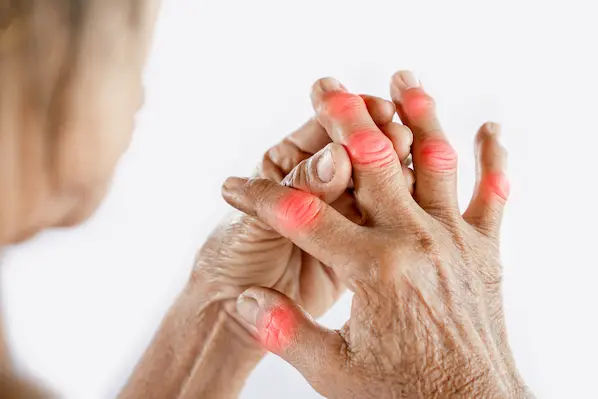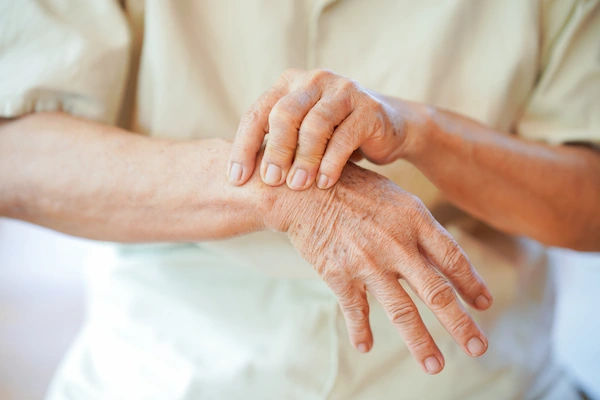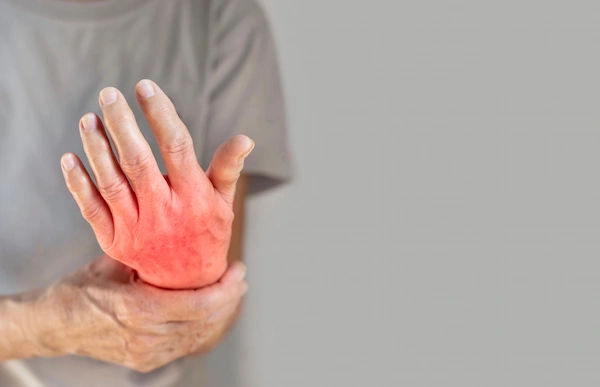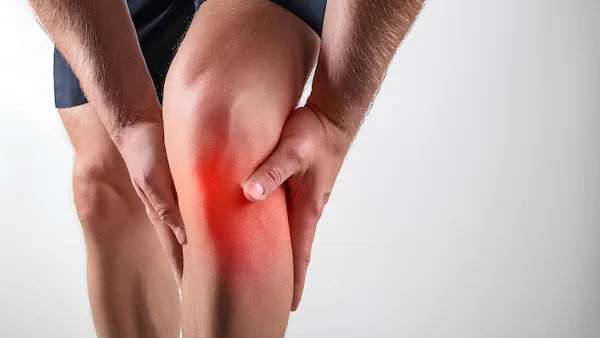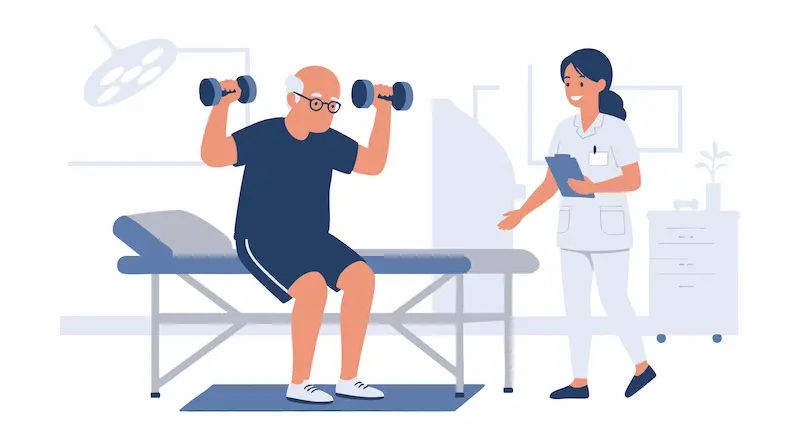Guide to World Arthritis Day
Discover the importance of World Arthritis Day with our complete guide. Learn about arthritis awareness, prevention tips, treatment options, and ways to support those living with the condition.


Introduction
Imagine a health condition that affects over 350 million people worldwide, causing chronic pain, stiffness, and disability. This isn't a rare disease; it's arthritis, a term encompassing over 100 different conditions that impact the joints and surrounding tissues. Every year on October 12th, World Arthritis Day (WAD) serves as a crucial global platform to raise awareness, challenge misconceptions, and advocate for better support and treatment for those living with this often-debilitating condition. This day unites patients, doctors, communities, and organisations to shine a light on the realities of living with arthritis and to emphasise that early diagnosis and proper management can make a profound difference. This article will guide you through the significance of World Arthritis Day, help you understand the different types of arthritis, recognise early symptoms, and explore actionable strategies for management and improved quality of life.
What is World Arthritis Day? A Global Initiative
World Arthritis Day is more than just a date on the calendar; it's a movement. Established in 1996 by Arthritis and Rheumatism International (ARI), the day is now coordinated by the European Alliance of Associations for Rheumatology (EULAR). Its primary mission is to bring all rheumatic and musculoskeletal diseases (RMDs), including all forms of arthritis, into the spotlight, ensuring they are recognised as a major public health priority.
The History and Mission Behind the Day
The inception of WAD was driven by a need to address the widespread lack of understanding about arthritis. For too long, it was dismissed as an inevitable part of aging or simply "aches and pains." WAD was created to combat this stigma, educate the public and policymakers, and influence positive change in the lives of the millions affected. The core mission revolves around three pillars: Awareness, Advocacy, and Access increasing awareness of the disease, advocating for better resources and research funding, and improving patient access to care and treatment.
The Significance of the Annual Theme
Each year, WAD is centered around a specific theme to focus efforts. Past themes have included "Don't Delay, Connect Today," emphasising early diagnosis, and "It's in Your Hands, Take Action," encouraging patient empowerment. The annual theme provides a unified message for campaigns, events, and educational materials worldwide, helping to create a stronger, more cohesive global voice against arthritis.
Demystifying Arthritis: It's More Than Just "Wear and Tear"
A common misconception is that arthritis is a single disease. In reality, it's an umbrella term. Understanding the differences is key to proper diagnosis and treatment. The two most prevalent forms are Osteoarthritis and Rheumatoid Arthritis, but they are fundamentally different conditions.
Osteoarthritis (OA): The Most Common Form
Often described as "wear-and-tear" arthritis, Osteoarthritis occurs when the protective cartilage that cushions the ends of your bones wears down over time. This leads to pain, swelling, and stiffness, most commonly affecting joints in the hands, knees, hips, and spine. While age is a significant risk factor, OA can also result from joint injury or obesity. It's a degenerative disease, meaning it tends to worsen over time, but its progression can be managed effectively with lifestyle changes.
Rheumatoid Arthritis (RA): An Autoimmune Attack
Unlike OA, Rheumatoid Arthritis is an autoimmune disease. This means the body's immune system mistakenly attacks its own tissues, primarily the synovium, the lining of the membranes that surround the joints. This attack causes painful swelling that can eventually lead to bone erosion and joint deformity. RA often affects joints on both sides of the body (e.g., both wrists or both knees) and can also cause systemic symptoms like fatigue and fever. Early and aggressive treatment for RA is critical to prevent long-term joint damage.
Other Prevalent Forms: Psoriatic Arthritis, Gout, and Juvenile Arthritis
Apart from the commonly known osteoarthritis and rheumatoid arthritis, several other forms significantly affect people’s lives.
Psoriatic Arthritis: Affects some people with the skin condition psoriasis, causing joint pain, stiffness, and swelling.
Gout: Characterised by sudden, severe attacks of pain and redness, often in the big toe, caused by a buildup of uric acid crystals.
Juvenile Arthritis (JA): A term used for arthritis that occurs in children under 16. Raising awareness for JA is a key part of World Arthritis Day, highlighting that arthritis is not just an older person's disease.
Health topic carousel:
Doctor's speciality: Rheumatology
Text: Consult a Rheumatologist for the best advice
Recognising the Signs: Early Symptoms You Shouldn't Ignore
Early diagnosis can dramatically alter the course of many types of arthritis, particularly inflammatory ones like RA. If you experience any of the following symptoms of rheumatoid arthritis or other forms persisting for more than two weeks, it's important to pay attention:
Joint Pain: Persistent pain or aching in one or multiple joints.
Stiffness: Especially morning stiffness that lasts for 30 minutes or more.
Swelling: Visible swelling, warmth, and redness around a joint.
Decreased Range of Motion: Difficulty moving a joint through its full range of motion.
Systemic Symptoms: Unexplained fatigue, fever, or a general feeling of being unwell.
If symptoms persist beyond two weeks, consult a doctor online with Apollo24|7 for further evaluation. A prompt diagnosis is the first step toward effective management.
Who is at Risk? Understanding Arthritis Risk Factors
While anyone can develop arthritis, certain factors increase the risk:
Age: The risk of OA, RA, and gout increases with age.
Sex: Women are more likely to develop RA, while men are more prone to gout.
Genetics: A family history of arthritis can increase your susceptibility.
Obesity: Excess weight puts additional stress on weight-bearing joints.
Joint Injuries: A previous injury can predispose a joint to OA later in life.
Smoking: This is a significant risk factor for RA and can worsen the disease.
Taking Control: Effective Management and Treatment Strategies
While there is no cure for most forms of arthritis, a multifaceted treatment approach can control symptoms, prevent joint damage, and maintain quality of life.
Medical Interventions: From Medication to Surgery
Treatment depends on the type of arthritis. For OA, pain relievers and anti-inflammatory drugs are common. For RA and other autoimmune forms, Disease-Modifying Antirheumatic Drugs (DMARDs) and biologics are used to suppress the immune system and slow disease progression. In advanced cases, surgery like joint replacement may be recommended.
The Power of Lifestyle: Exercise, Diet, and Weight Management
Lifestyle changes are cornerstone treatment options.
Exercise: Low-impact activities like swimming, walking, and cycling strengthen muscles around the joints, improving stability and reducing pain.
Diet: An anti-inflammatory diet rich in fruits, vegetables, fish, and whole grains can help manage symptoms.
Weight Management: Losing even a small amount of weight can significantly reduce stress on knees, hips, and back.
Physical and Occupational Therapy for Improved Function
Therapists can teach you exercises to preserve joint function and show you new ways to perform daily tasks (ergonomics) to protect your joints from stress.
Living Well with Arthritis: Daily Tips for a Better Quality of Life
Managing arthritis is a daily commitment. Beyond medical treatment, simple strategies can help:
Pace Yourself: Alternate periods of activity with rest to avoid overloading your joints.
Use Assistive Devices: Canes, jar openers, and ergonomic tools can make a big difference.
Apply Heat and Cold: Heat can relax muscles and ease stiffness; cold can reduce swelling and numb sharp pain.
Manage Stress: Techniques like meditation can help you cope with the emotional challenges of chronic pain.
How You Can Get Involved in World Arthritis Day
You don't have to have arthritis to make a difference. You can:
Wear Blue: Blue is the official color for arthritis awareness.
Share Information: Use social media to share facts and resources using hashtags like #WorldArthritisDay.
Attend or Organise an Event: Participate in local health fairs, walks, or webinars.
Support Organisations: Donate to or volunteer with arthritis foundations.
Conclusion
World Arthritis Day serves as an annual reminder that arthritis is a serious, widespread, but manageable set of conditions. It challenges us to move beyond outdated stereotypes and empowers individuals with knowledge and hope. By understanding the early symptoms, knowing the risk factors, and adopting proactive management strategies, those living with arthritis can lead full, active lives. This day calls on all of us: patients, caregivers, healthcare professionals, and the public to unite in support, advocacy, and awareness. Let's use this day as a starting point to take action, whether it's scheduling a check-up for persistent joint pain, learning more about the condition, or simply offering support to someone who is affected. Your joints are for life; take steps today to protect them.
FAQs about World Arthritis Day and Arthritis
Below are the FAQs:
1. What is the theme for World Arthritis Day 2024?
A. The theme for World Arthritis Day 2024 is typically announced closer to the date by EULAR. It is designed to focus global efforts on a specific aspect of arthritis awareness and care.
2. What is the main difference between osteoarthritis and rheumatoid arthritis?
A. Osteoarthritis is a degenerative "wear-and-tear" disease, while Rheumatoid Arthritis is an autoimmune disorder where the body attacks its own joints. RA often involves systemic symptoms like fatigue and fever and requires different, more aggressive treatment.
3. Can young people get arthritis?
A. Absolutely. Juvenile Arthritis (JA) affects children under the age of 16. Furthermore, types like Rheumatoid Arthritis often begin between the ages of 30 and 50.
4. Are there any specific foods to avoid with arthritis?
A. For inflammatory arthritis like RA, it's often recommended to limit processed foods, red meat, and sugar, as they can promote inflammation. For gout, foods high in purines (like red meat and shellfish) and alcohol can trigger flares.
5. What are the best exercises for arthritis pain?
A. Low-impact exercises are best. Swimming, water aerobics, cycling, walking, and tai chi are excellent choices as they strengthen muscles without putting excessive stress on the joints.
Health topic carousel:
Doctor's speciality: Rheumatology
Text: Consult a Rheumatologist for the best advice
Consult Top Specialists for Personalised Tips

Dr. Anand Ravi
General Physician
2 Years • MBBS
Bengaluru
PRESTIGE SHANTHINIKETAN - SOCIETY CLINIC, Bengaluru
Dr Ankit Patowari
Rheumatologist
6 Years • MBBS, MD MEDICINE, DM RHEUMATOLOGY
Guwahati
Apollo Clinic Guwahati, Assam, Guwahati

Dr. Zulkarnain
General Physician
2 Years • MBBS, PGDM, FFM
Bengaluru
PRESTIGE SHANTHINIKETAN - SOCIETY CLINIC, Bengaluru

Dr. Brig K Shanmuganandan
Rheumatologist
20 Years • MBBS, MD (Med.), DNB (Med.), Fellow (Rheuma.)
Chennai
Apollo Hospitals Greams Road, Chennai
(475+ Patients)

Dr. Kaushik V V
Rheumatologist
17 Years • MBBS, MRCP, CCT (GIM), CCT (Rheumatolgy), FRCP
Chennai
Apollo Hospitals Greams Road, Chennai
(125+ Patients)
Consult Top Specialists

Dr. Anand Ravi
General Physician
2 Years • MBBS
Bengaluru
PRESTIGE SHANTHINIKETAN - SOCIETY CLINIC, Bengaluru
Dr Ankit Patowari
Rheumatologist
6 Years • MBBS, MD MEDICINE, DM RHEUMATOLOGY
Guwahati
Apollo Clinic Guwahati, Assam, Guwahati

Dr. Zulkarnain
General Physician
2 Years • MBBS, PGDM, FFM
Bengaluru
PRESTIGE SHANTHINIKETAN - SOCIETY CLINIC, Bengaluru

Dr. Brig K Shanmuganandan
Rheumatologist
20 Years • MBBS, MD (Med.), DNB (Med.), Fellow (Rheuma.)
Chennai
Apollo Hospitals Greams Road, Chennai
(475+ Patients)

Dr. Kaushik V V
Rheumatologist
17 Years • MBBS, MRCP, CCT (GIM), CCT (Rheumatolgy), FRCP
Chennai
Apollo Hospitals Greams Road, Chennai
(125+ Patients)
